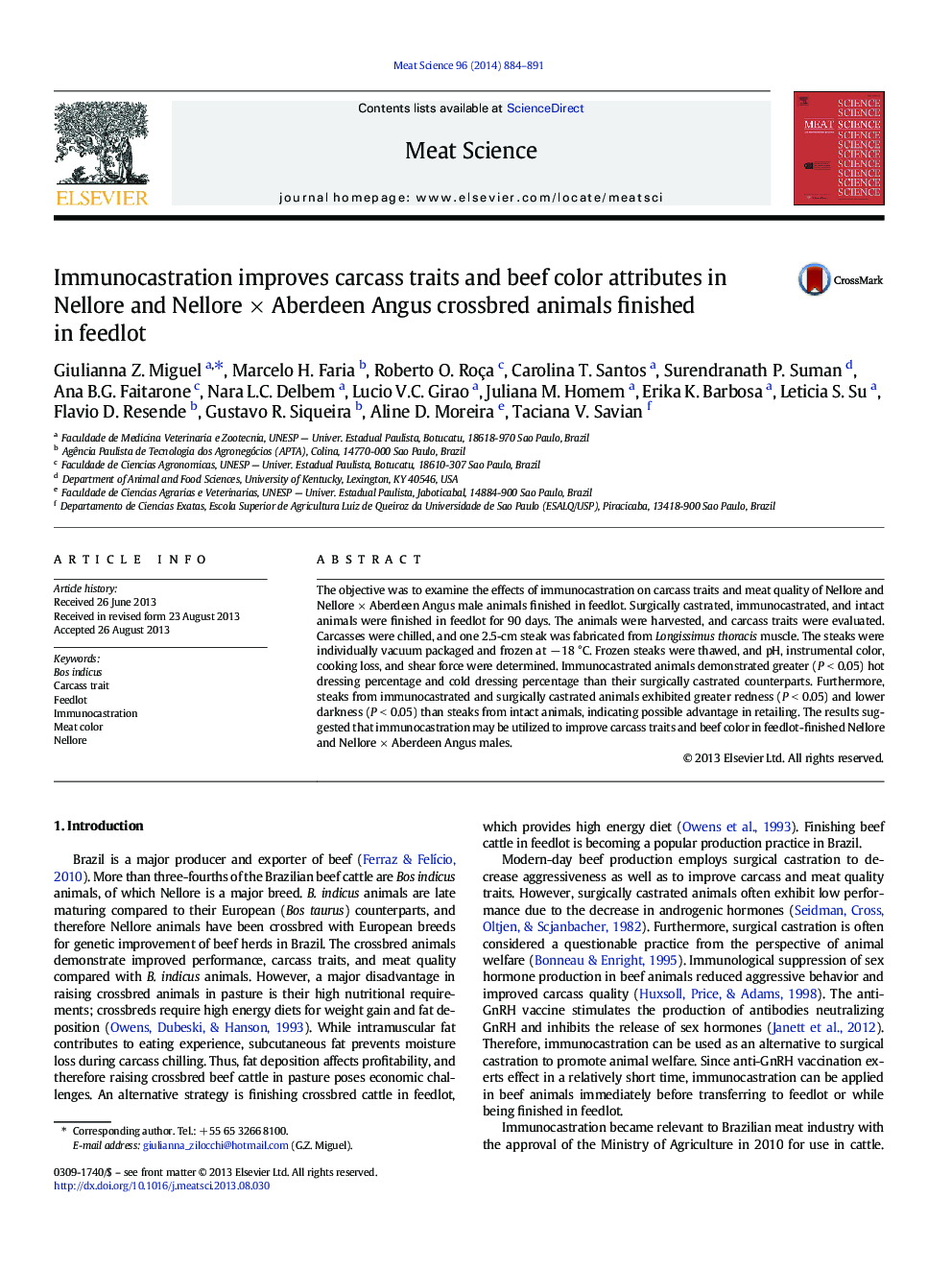| Article ID | Journal | Published Year | Pages | File Type |
|---|---|---|---|---|
| 5791860 | Meat Science | 2014 | 8 Pages |
â¢Immunocastration improved carcass traits in Nellore and Nellore x Aberdeen Angusâ¢Immunocastration increased dressing percentage compared to surgical castrationâ¢Immunocastration and surgical castration increased redness in Longissimus steaksâ¢Beef from intact males was darker than the beef from immunocastrated malesâ¢Immunocastration can be employed to improve beef color and carcass traits
The objective was to examine the effects of immunocastration on carcass traits and meat quality of Nellore and Nellore Ã Aberdeen Angus male animals finished in feedlot. Surgically castrated, immunocastrated, and intact animals were finished in feedlot for 90 days. The animals were harvested, and carcass traits were evaluated. Carcasses were chilled, and one 2.5-cm steak was fabricated from Longissimus thoracis muscle. The steaks were individually vacuum packaged and frozen at â 18 °C. Frozen steaks were thawed, and pH, instrumental color, cooking loss, and shear force were determined. Immunocastrated animals demonstrated greater (P < 0.05) hot dressing percentage and cold dressing percentage than their surgically castrated counterparts. Furthermore, steaks from immunocastrated and surgically castrated animals exhibited greater redness (P < 0.05) and lower darkness (P < 0.05) than steaks from intact animals, indicating possible advantage in retailing. The results suggested that immunocastration may be utilized to improve carcass traits and beef color in feedlot-finished Nellore and Nellore Ã Aberdeen Angus males.
